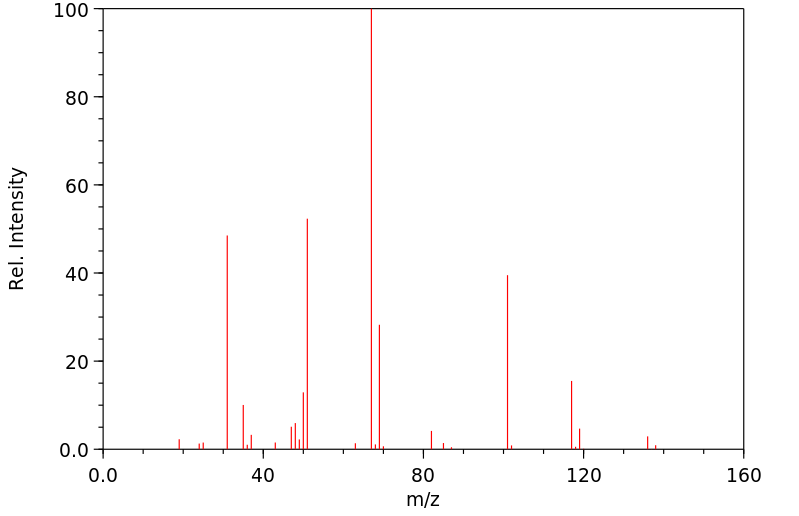代谢
HCFC-124与其他卤代烃一起进行研究,因为它与已知的肝毒素卤索烷在结构上存在相似性(都含有 geminal dihalomethyl group [-CHX2])。此处仅讨论了HCFC-124的结果及其与其他化合物的比较。在暴露于1% HCFC-124 6小时后,三氟乙酸(TFA)随尿液排出——15.6 umol/12hour/kg。TFA排泄的顺序为HCFC-123=卤索烷>HCFC-124>HCFC-125。HCFC-124显示出与卤索烷暴露后观察到的TFA-蛋白质(微粒体和细胞溶质)模式相似,尽管个别条带的免疫反应性较低。TFA-蛋白质形成的顺序为卤索烷=HCFC-123>>HCFC-124>HCFC-125。卤索烷和HCFC-124提出的生物活化方案为:细胞色素P-450催化氢提取,产生中间体1,1-二卤-2,2,2,-三氟乙基自由基:氧气回弹会生成 geminal halohydrin:失去HX会生成三氟乙酰氯或氟化物,这可能会经过氧化生成TFA,或者可能与蛋白质中的亲核位点反应生成TFA-蛋白质。数据支持细胞色素P-450催化的卤醇形成是产生TFA和TFA-蛋白质加合物的限速步骤的理论。数据显示,二卤甲基团(CHX2)上的氟化程度增加,体内的代谢作用减少。
HCFC-124 has been studied with the other halocarbons due to structural similarities (all contain a geminal dihalomethyl group [-CHX2]) with halothane, a known hepatotoxin. Only the results for HCFC-124 and it's comparison to the other compounds is discussed here. Trifluoroacetic acid (TFA) was excreted in urine following 6 hour exposure to 1% HCFC-124 - 15.6 umol/12hour/kg. TFA excretion rank order HCFC-123=halothane>HCFC-124>HCFC-125. HCFC-124 showed a pattern of TFA-proteins (microsomal and cytosolic) similar to that seen following halothane exposure, although the immunoreactivity of individual bands was lower. TFA-protein formation rank order halothane=HCFC-123>>HCFC-124>HCFC-125. ... The proposed bioactivation scheme for halothane and HCFC-124 is: cytochrome P-450 catalyzed hydrogen abstraction to yield the intermediate 1,1-dihalo-2,2,2,-trifluoroethyl radical: oxygen rebound would give the geminal halohydrin: loss of HX would give trifluoroacetylchloride or fluoride which may undergo oxidation to give TFA or may react with nucleophilic sites in proteins to give TFA-protein. The data support the theory that cytochrome P-450-catalyzed formation of halohydrins is the rate-limiting step in the production of TFA and TFA-protein adducts. The data demonstrates increasing fluorination on the dihalomethyl group (CHX2) decreases in vivo metabolism.
来源:Hazardous Substances Data Bank (HSDB)







